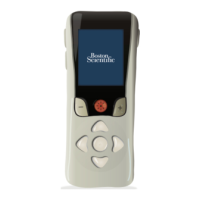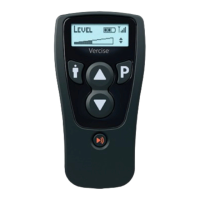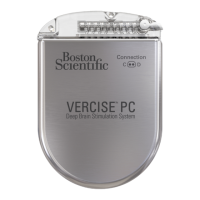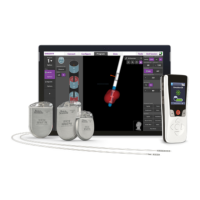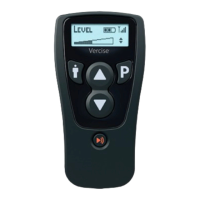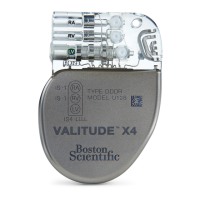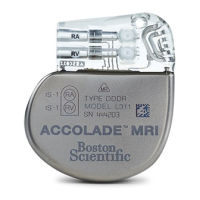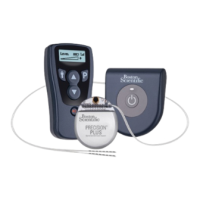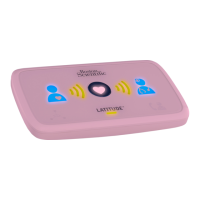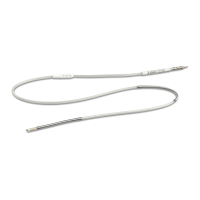Detailed Device Description
Physician Manual
91098825-02 61 of 337
Stimulator Programmable Characteristics
The stimulation parameters are independent for the two DBS Leads such that
stimulation of two different brain targets can have different amplitudes, pulse widths,
stimulation rates, and contact congurations. The two DBS Leads can also have
differing monopolar and multipolar congurations; however, a given DBS Lead
contact cannot be programmed as both monopolar and multipolar.
The programmable parameter ranges for the Stimulator are shown in Table 2.
Note: Some frequency combinations may not be used. See the DBS Programming
Manual for specic frequency combinations.
Table 2: Stimulator Function
Parameter Range
Amplitude
1
0.1 – 20 mA
Rate
2, 3
2 – 255 Hz
Pulse Width
4
10 – 450 µs
Cycle (On/Off) 1 s – 90 min
Stim Ramp On 1 – 10 s
Contact Connections 16
Independent Areas of Stim (4 Programs with
4 Areas per Program)
16
1
The programmable coverage for each individual contact is limited to 12.7 mA.
A programming interlock is enforced to limit the total output current to 20 mA or less
per coverage area. For example, a maximum current output of 12.7 mA on one contact
would limit the total summed current output on the remaining contacts to 7.3 mA within
one coverage area.
2
The rate is limited to 255 Hz for a given area.
3
The use of higher frequencies than the ones that are established (250 Hz) is the sole
responsibility of the user.
4
The use of lower pulse widths than established (60-450 μsec) is the sole responsibility
of the user.
NOTE: While it is possible to program stimulation rates higher than 255 Hz,
clinical effectiveness and saftey of these cumulative rates has not been
demonstrated and is not recommended.
WARNING: Although the CP utilizes warnings to aid clinicians in their
determination of safe charge density levels, the primary responsibility
of keeping safe current levels resides with the clinician. Additionally,
maximum and minimum amplitude levels allowed by the Remote
Control should be set and veried by the physician to ensure that these
levels are safe.
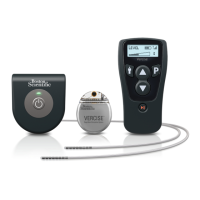
